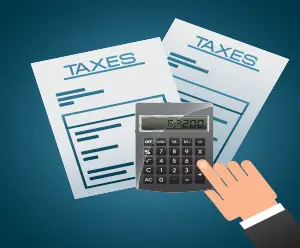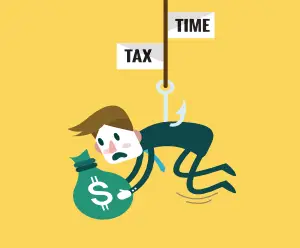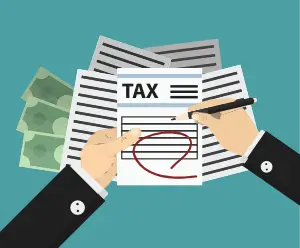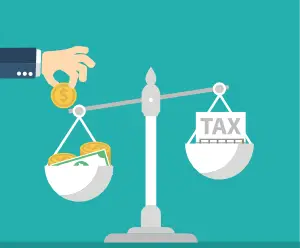
Understanding the IRS Substitute for Return
Click to ask Mike Ask Mike The Internal Revenue Service (IRS) Substitute for Return (SFR) is a term many taxpayers

Handling financial responsibilities, particularly those owed to the IRS, requires diligence and proactive measures. However, unforeseen circumstances may arise, leading to missed payments on installment agreements, potentially resulting in default. Understanding the process and available resources when faced with missed payments is crucial to avoiding escalated actions by the IRS. In this comprehensive guide, we’ll explore dealing with missed payments, the consequences of default, and the vital role of Form 9423 in resolving these issues effectively.
Dealing with Missed Payments:
When facing missed payments on IRS installment agreements, swift action is imperative. The IRS typically grants a grace period of 30 days to rectify any missed payments. During this period, it’s essential to assess the situation thoroughly and take appropriate steps to address the missed payment. This might involve reviewing your financial situation, identifying any challenges, and exploring options for catching up on payments.
Consequences of Default:
Failure to reinstate missed payments within the grace period can lead to default on the installment agreement, triggering collection actions by the IRS. Default may result in receiving a Notice of Intent to Levy, indicating the IRS’s intention to pursue collection measures such as wage garnishment or asset seizure. Understanding the severity of default and its potential repercussions underscores the importance of promptly addressing missed payments to avoid escalating consequences.
Reinstating the Agreement:
Despite defaulting on an installment agreement, taxpayers have options to reinstate it and mitigate further consequences. One approach is to pay the total outstanding debt, immediately reinstating the agreement and halting any ongoing collection actions by the IRS. Alternatively, taxpayers can file Form 9423, the Collection Appeal Request, to appeal the default. This form provides an avenue for taxpayers to explain the reasons for missed payments and propose a resolution to reinstate the agreement.
Understanding Form 9423:
Form 9423 serves as a formal mechanism for taxpayers to appeal IRS collection actions related to missed payments and defaults on installment agreements. It enables taxpayers to present their case, provide reasons for missed payments, and propose a resolution to reinstate the agreement. When completing Form 9423, it’s crucial to provide accurate and detailed information, including explanations for missed payments and a clear plan for resolving the issue.
Filling Out Form 9423:
Completing Form 9423 effectively involves several key steps:
Tips for Success:
To maximize the effectiveness of Form 9423 and increase the likelihood of a favorable outcome, consider the following tips:
Missed payments and defaults on IRS installment agreements can be daunting but understanding the process and leveraging resources like Form 9423 can help resolve these issues effectively. By taking prompt and informed action, taxpayers can work towards reinstating their agreements and maintaining compliance with the IRS. Remember, proactive communication and timely intervention are crucial in managing financial obligations and avoiding escalated measures by the IRS. Through careful attention to detail and adherence to the steps outlined in this guide, taxpayers can navigate the appeals process with confidence and achieve a favorable resolution.
You can now ask our AI assistant any questions you have about your tax debt or any tax-related issues. Whether you’re unsure about payment plans, need clarification on penalties, or want information on how to resolve your tax situation. Our AI is ready to assist you with all your tax-related concerns.

By interacting with our AI assistance, you agree to our terms & conditions. Enjoy our AI Tax Assistant responsibly.
Ask me any questions...
Related Posts

Click to ask Mike Ask Mike The Internal Revenue Service (IRS) Substitute for Return (SFR) is a term many taxpayers

Click to ask Mike Ask Mike The Internal Revenue Service (IRS) Substitute for Return (SFR) is a term many taxpayers

Click to ask Mike Ask Mike The Internal Revenue Service typically operates within a 10-year window, commencing from the

Click to ask Mike Ask Mike The Internal Revenue Service (IRS) operates within specific timeframes dictated by statutes of limitations

Click to ask Mike Ask Mike understanding the ins and outs of the 10-year statute of limitations (SOL) is essential.
Recent Posts

Click to ask Mike Ask Mike The Internal Revenue Service (IRS) Substitute for Return (SFR) is a term many taxpayers

Click to ask Mike Ask Mike The Internal Revenue Service (IRS) Substitute for Return (SFR) is a term many taxpayers

Click to ask Mike Ask Mike The Internal Revenue Service typically operates within a 10-year window, commencing from the

Click to ask Mike Ask Mike The Internal Revenue Service (IRS) operates within specific timeframes dictated by statutes of limitations

Click to ask Mike Ask Mike understanding the ins and outs of the 10-year statute of limitations (SOL) is essential.
Disclaimer: This is educational content, not legal, accounting, or tax advice.
This is a tax debt resource website, not to be used in lieu of a tax attorney or for legal advice. All information, Ai chat responses, articles, materials, and content are intended to inform users on a variety of tax topics. In no way is it intended to be construed as accounting, legal, tax, other services or advice. This site is not intended to be used to avoid tax penalties or tax debt that may be imposed by law. Terms and Conditions. Your use of this site constitutes acceptance of the following terms and conditions.
This is a tax debt resource website, not to be used in lieu of a tax attorney or for legal advice. All information, Ai chat responses, articles, materials, and content are intended to inform users on a variety of tax topics. In no way is it intended to be construed as accounting, legal, tax, other services or advice. This site is not intended to be used to avoid tax penalties or tax debt that may be imposed by law. Terms and Conditions. Your use of this site constitutes acceptance of the following terms and conditions.
© 2023 · Tax Debt Monster, Inc. All rights reserved

For all Tax Professionals that would like to partner up with us. By partnering with us, you’ll help us connect and make a positive impact in the tax community. Partner up with us and receive a complimentary Ai Tax Sidekick to help support your clients at no cost! Click here if you’re interested in our Partner-Up program

By interacting with our AI assistance, you agree to our terms & conditions. Enjoy our AI Tax Assistant responsibly.
How may I help you with your tax issue?